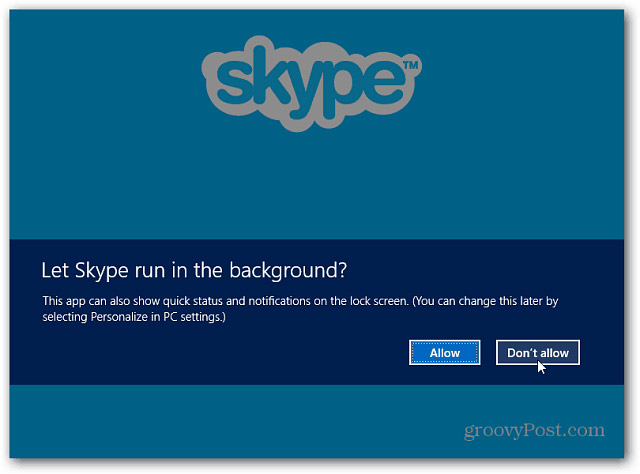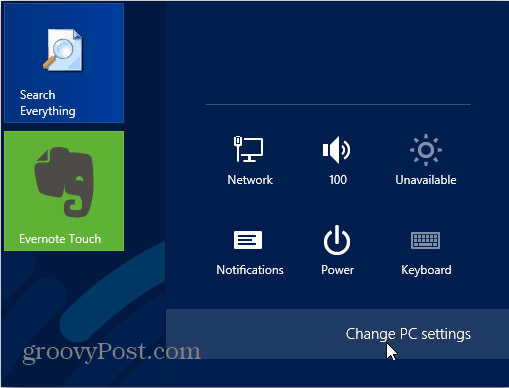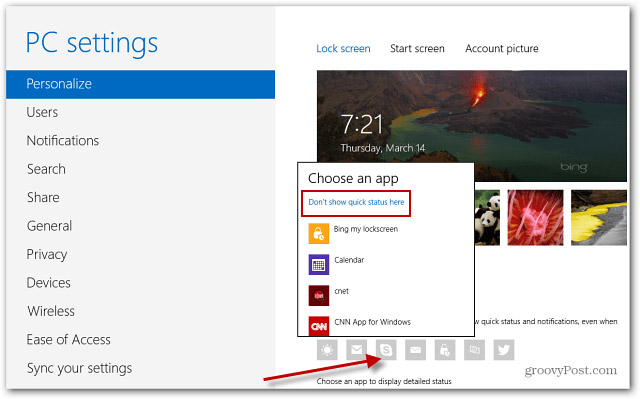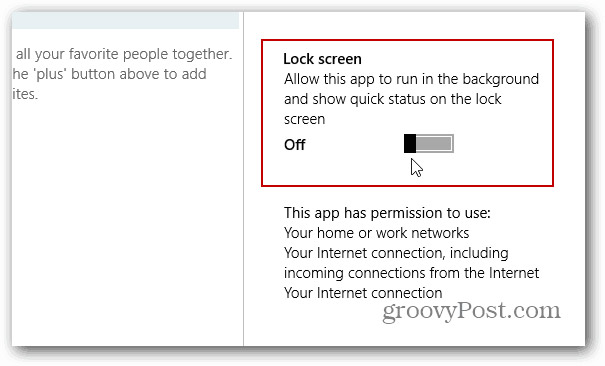How to turn off applications that run in the background on Windows
Turning off applications running in the background on a computer can free up resources for the system and other programs. This is useful when the system is running slowly or when two programs are using the same device. It also helps you determine if any conflicts occur with third-party software running on the system. If you do not know how to check and how to turn off the application running in the background on Windows, please see the instructions in the article below.
Solution 1: Temporarily turn off the application that runs in the background on Windows
Right-click on the program's icon in the system tray (next to the clock) and select Close, Exit , or Disable .
Solution 2: Temporarily disable the background application on Windows from Task Manager
Windows Task Manager can close hidden programs that the system tray cannot.
Warning: If you use the End Process feature to close the program, you will lose all data not saved in that program. Need to limit this and be careful when terminating processes in the system because you can disable the necessary components of the system. You may have to restart your computer to fully restore the functionality.
If you are unfamiliar with the processes listed, follow these rules:
- Do not close EXPLORER.EXE or anything with SYSTEM, SYSTRAY or SERVICE in the program name.
- If you are not sure about the process, do not end it.
- If you end a process by mistake, restart your computer and the system will reactivate it.
If you still have memory or device problems, follow these steps:
- Press and hold CTRL and ALT keys, then press the DELETE key. The Windows Security window appears.
- From the Windows Security window, click Task Manager or Start Task Manager . Windows Task Manager will open.
- From Windows Task Manager , open the Applications tab. From the Applications tab, highlight each application you want to close and then click End Task .
- Now open the Processes tab. For each program you want to close, mark it / click it once and then click End Process . Do not close the System or EXPLORER.EXE .
Not sure which program is causing the conflict?
- Click the Windows Start button, then click Run .
- Type MSCONFIG , then click OK . The System Configuration Utility window will open.
- Click the Startup tab.
When you see the list of programs that start automatically when Windows starts, look at the check boxes next to each program: check to start the application with Windows and deselect if you don't want the program to start up in the same system. system. You can experiment by unchecking some boxes and restarting your computer until you determine where the problem is.
Solution 3: Restart the computer in Selective Startup
Note: Selective Startup disables third party security software such as firewalls and antivirus software. To protect your computer, you can disconnect your computer from the Internet while performing this test (turn off the modem or disconnect the network cable). In addition, running in Selective Startup can cause you to lose your Internet connection. Putting your computer into Normal Startup mode will allow you to reconnect to the Internet.
We recommend that you do not leave the computer in Selective Startup mode, as this may cause parts of security software or other applications to be unavailable. Once you've determined which program is causing the problem, you should check the program or help website documentation to see if the program can be configured to avoid conflicts.
These steps are only for troubleshooting problems that you may encounter. After determining whether the background program is causing the problem, we recommend that you re-run System Configuration Utility and select Normal Startup .
Go to Selective Startup on Windows 7/8/10:
- Click the Windows button (formerly the Start button).
- Type " Run ", then click the search icon.
- Select Run in Programs .
- Type MSCONFIG , then click OK . The System Configuration Utility window will open.
- Select Selective Startup .
- Click OK .
- Uncheck Load Startup Items .
- Click Apply , then click Close .
- Restart your computer.
Go to Selective Startup on Windows Vista:
- Click the Windows button (formerly the Start button).
- Search for MSCONFIG .
- Double-click MSCONFIG.EXE .
- From the General tab, select Selective Startup .
- Uncheck Load Startup Items .
- Click Apply , then click Close .
- Restart your computer.
Go to Selective Startup on Windows XP:
- Click the Windows Start button, then click Run .
- Type MSCONFIG , then click OK . The System Configuration Utility window will open.
- From the General tab, select Selective Startup .
- Uncheck Load Startup Items .
- Click Apply , then click Close .
- Restart your computer.
Turn off applications running in the background on Windows 10
With this new Microsoft operating system, TipsMake.com has a detailed guide to turn off applications running in the background, making the system more stable, please refer to: How to turn off applications running in the background on Windows ten
Turn off applications running in the background on Windows 8
Windows 8 allows certain applications such as Skype, News and other applications to run in the background so that users will always receive updates and notifications of Live Tile . However, sometimes you may want to disable them if you do not really need or update the application to make you uncomfortable.
The easiest way to disable the application running in the background is to install it at the initial setup. For example, when you start the Skype application on Windows 8 for the first time, it will ask if you want to allow it to run in the background. Select Don't Allow .

If you allow the application to run in the background, you can still change it later. Use the Windows Key + I shortcut and select Change PC Settings .

Then select Personalize on the left and below Lock Screen Apps , click the icon for the application you want to stop running in the background. In this case, Skype, then select the link Don't Show Quick Status Here .

Or in some applications, such as Skype, you can access Permissions and turn off permissions that allow applications to run in the background.

See more:
- Quickly exit 'Non-Responsive' programs in Windows
- Turn off programs that start with the system on Windows 10
- Turn off 'stubborn' programs with Process Assassin
You should read it
- The most effective way to turn off applications running in the background on laptops
- The simple way to disable the implicit running of Chrome browser
- How to turn off the background application to save battery for Android
- How to turn off applications running in the background on Windows 10
- How to turn off applications running in the background on Android saves battery and speeds up
- How to disable applications running in the background on a Windows 10 computer
- How to turn off apps running in the background Windows 11, How to reduce RAM consumption on Windows 11
- How to fix the problem of too many background processes running on Windows PC
May be interested
- How to turn off applications that start with Windows 7 to speed up the computer
 how to turn off applications that start with windows 7 to speed up the computer. for applications to quickly launch when needed, we often let applications run in the background to start with windows. however, with a low-profile computer with very little ram, the fish
how to turn off applications that start with windows 7 to speed up the computer. for applications to quickly launch when needed, we often let applications run in the background to start with windows. however, with a low-profile computer with very little ram, the fish - How to turn off the background application to save battery for Android
 how to turn off the background application to save battery for android. phones running on the android operating system with very little ram when running multiple applications at the same time will cause lag and we have to turn off those applications to free up the memory.
how to turn off the background application to save battery for android. phones running on the android operating system with very little ram when running multiple applications at the same time will cause lag and we have to turn off those applications to free up the memory. - How to turn off the background application to save battery for iPhone
 how to turn off the background application to save battery for iphone. unlike other android phones, the ios operating system manages applications running in the background better. however, if you do not have the habit of opening an application often, running in the background will cause it to
how to turn off the background application to save battery for iphone. unlike other android phones, the ios operating system manages applications running in the background better. however, if you do not have the habit of opening an application often, running in the background will cause it to - How to disable applications that start with Windows 11
 applications that start with windows are installed so that users can quickly access the programs they need every time they turn on their computers. however, some applications also take advantage of this feature to annoy users.
applications that start with windows are installed so that users can quickly access the programs they need every time they turn on their computers. however, some applications also take advantage of this feature to annoy users. - How to turn off apps running in the background Windows 11, How to reduce RAM consumption on Windows 11
 you can turn off apps running in the background of windows 11 to optimize performance, save battery and reduce ram consumption.
you can turn off apps running in the background of windows 11 to optimize performance, save battery and reduce ram consumption. - How to turn off SuperFetch on Windows 10
 superfetch is a process running in the background on windows that is responsible for analyzing, marking and putting the software that you regularly use on your computer into ram, cpu and prioritizing ram and cpu resources to launch applications. that first.
superfetch is a process running in the background on windows that is responsible for analyzing, marking and putting the software that you regularly use on your computer into ram, cpu and prioritizing ram and cpu resources to launch applications. that first. - Instructions to turn off applications running in the background on iPhone phones to save battery
 to save battery for iphone as well as use other applications 'smoothly', please turn off applications running in the background on iphone according to our instructions below.
to save battery for iphone as well as use other applications 'smoothly', please turn off applications running in the background on iphone according to our instructions below. - How to change the background light and dark Windows with 1 mouse click
 to quickly switch light background to dark background or vice versa on windows 10, users will use easy dark mode.
to quickly switch light background to dark background or vice versa on windows 10, users will use easy dark mode. - How to fix the problem of too many background processes running on Windows PC
 the windows operating system is very large, with many applications, processes and services running simultaneously. these apps may not be visible to you in desktop view, but you can simply open task manager to discover the many processes running in the background.
the windows operating system is very large, with many applications, processes and services running simultaneously. these apps may not be visible to you in desktop view, but you can simply open task manager to discover the many processes running in the background. - How to turn on night mode on Coc Coc Android, iOS
 coc coc on my phone has a dark background interface, which helps reduce the impact of the screen on the eyes when you use coc coc at night.
coc coc on my phone has a dark background interface, which helps reduce the impact of the screen on the eyes when you use coc coc at night.










 How to delete old photos from Windows 10 lock screen history
How to delete old photos from Windows 10 lock screen history How to fix Windows 10 hangs on the Welcome screen
How to fix Windows 10 hangs on the Welcome screen How to restrict access to Settings and Control Panel Windows 10
How to restrict access to Settings and Control Panel Windows 10 How to bring Windows XP interface to Windows 10
How to bring Windows XP interface to Windows 10 How to manage Pagefile virtual memory in Windows 10
How to manage Pagefile virtual memory in Windows 10 How to download Windows 7 Aero Theme for Windows 10
How to download Windows 7 Aero Theme for Windows 10